Setting the patterns in the first half of the box.

Dusting with partine (talcum) to separate the patterns from the sand.

Fine sieve of initial sand to ensure finest detail.

Peg ram the sand to compress against the patterns.

Flat ram the sand – followed by cutting the excess from the box.

Set the bottom board to the mould.

Prepared to turn over.

Once over, remove the first board and expose the patterns.

Clean up the edges to the patterns.
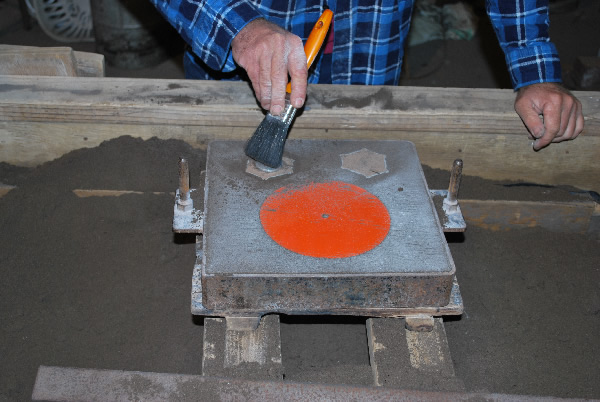
Partine to the sand and patterns to stop the two halves from sticking together.

Place the second half of the box.

Fine sieve again.

Peg ram again.

Flat ram again.
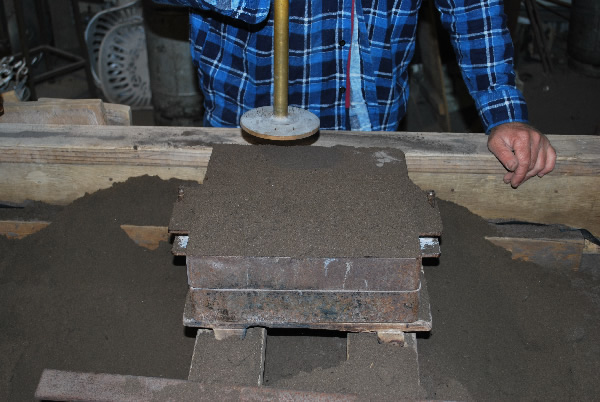
Cutting the excess sand from the box.

Setting the top board.

Separate the two halves.

Removing the patterns.
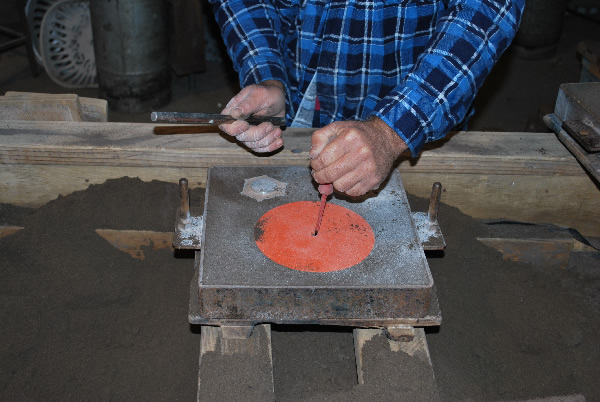
Removing the patterns.
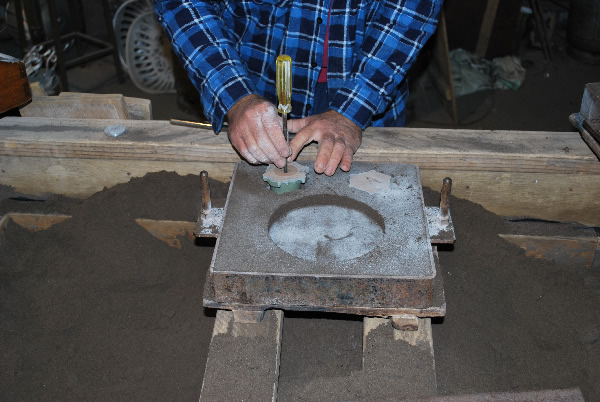
Patterns removed and cavities exposed.

Replace the top half to compress any broken edges of sand then remove again.

Prepare the bottom half with inlets to the cavities.

Set the inlets to pour the metal.

Runner tube through the top half to pour the metal.

Fingering the holes to avoid grains of sand washing into the mould when pouring.

The bottom half ready.

Replace the top half.

Prepare heads to increase the pressure through gravity.

The mould ready to pour.

Load the pot ready to melt the metal.

Lid lifting tools.

Standard furnace tools including skimmer, tongs for lifting and pouring, long handle pliers, tongs for handling metal when adding to the pot.

Preheating all metal before putting into pot.

Pot in melting stage.

Lift the pot with lifting tongs.

Pick up the pot with pouring tongs – one glove close to pot 650 degrees C.

Pouring into moulds.
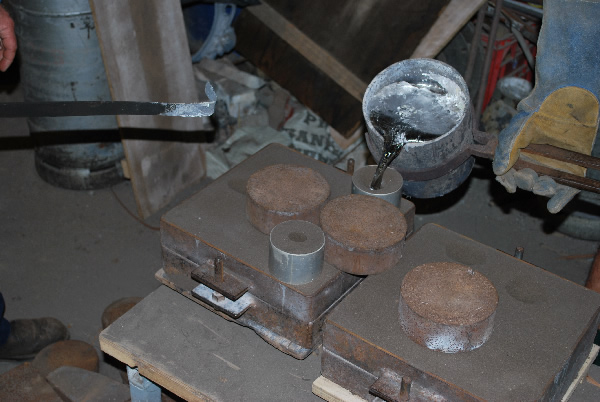
Pouring into moulds.

Pigging the leftover metal.

The moulding tub closed down after remoisturising and sieving – ready for the next day.



